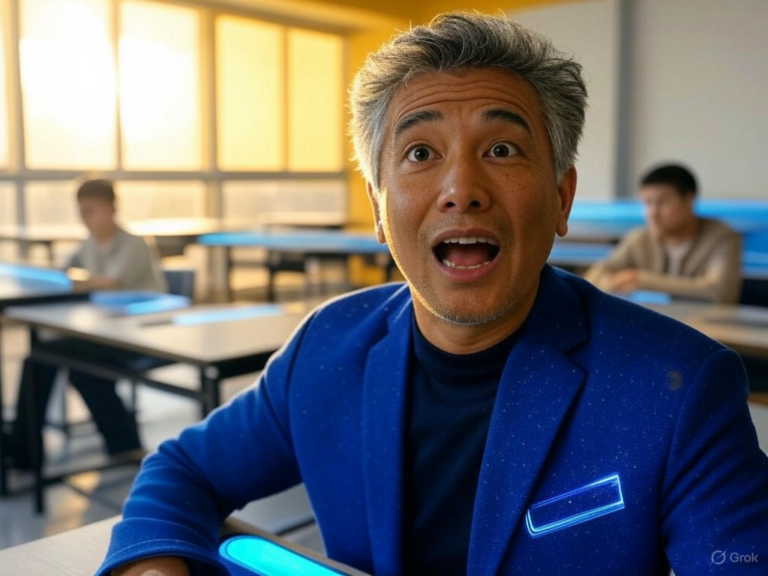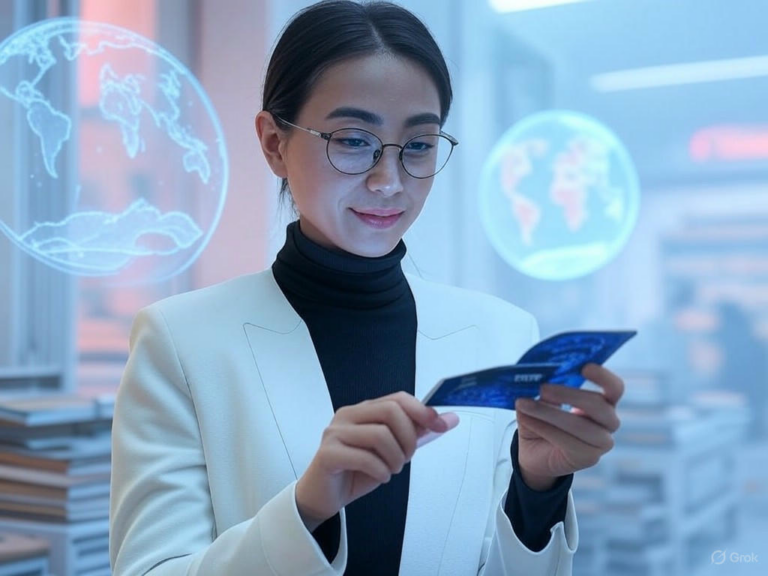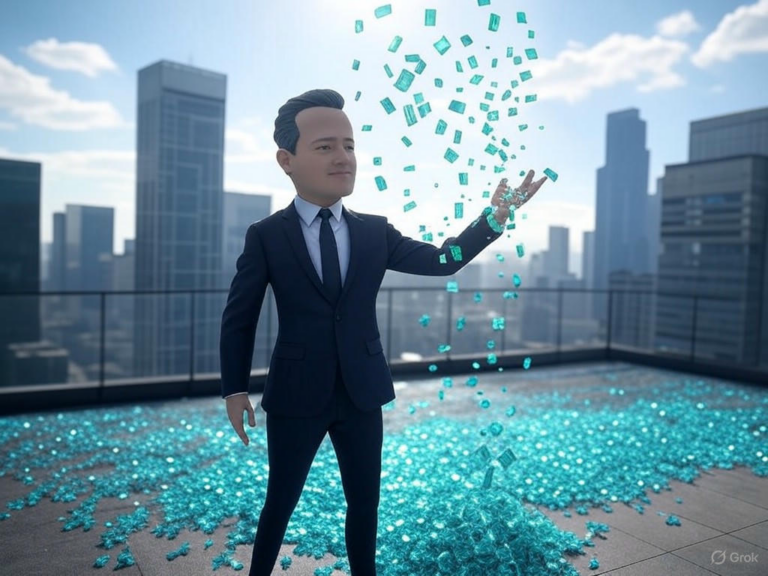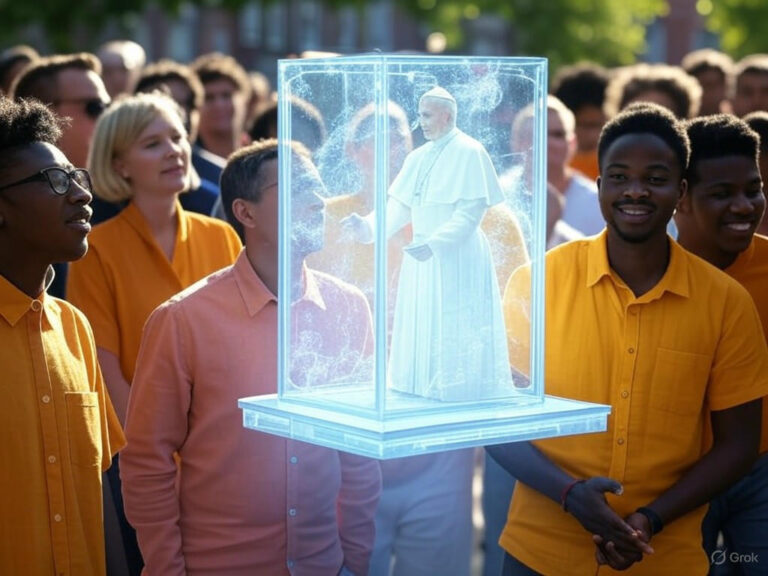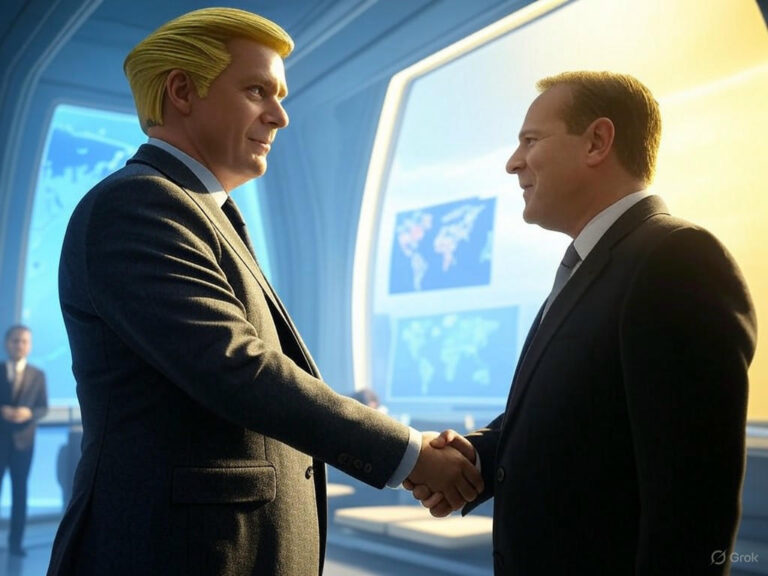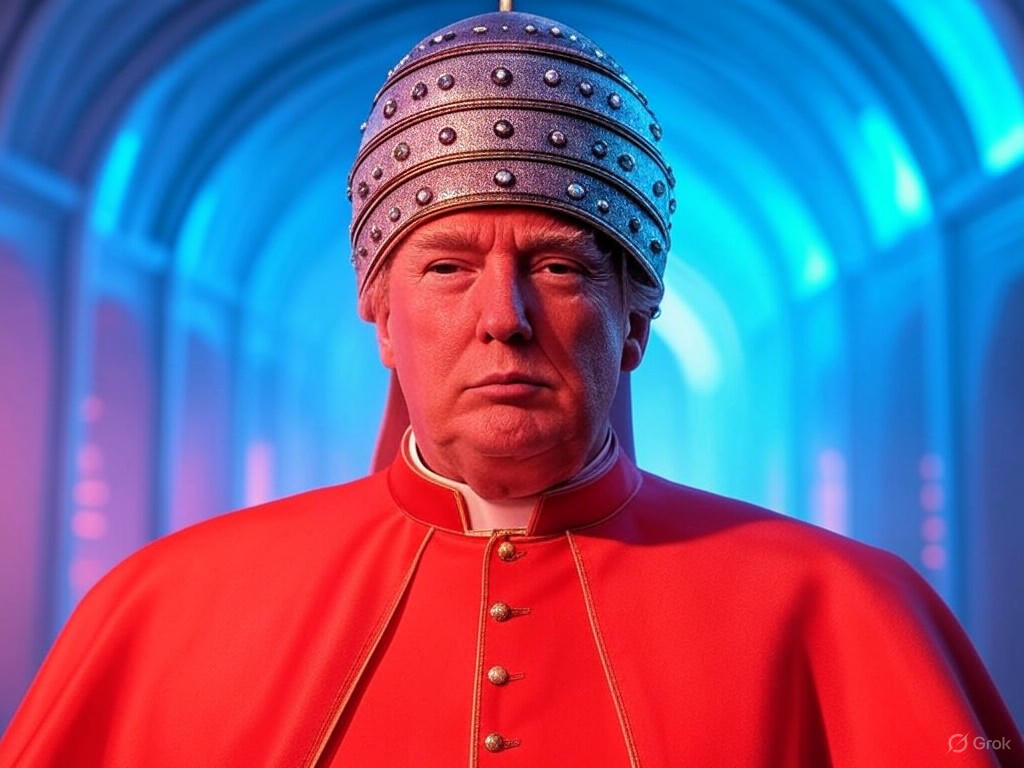
Trump AI Image: Trump as Pope Sparks Social Media Frenzy
A Quick Overview of the Buzz
A Trump AI Image showing former President Donald Trump in papal robes has exploded across social media, stirring up a storm of reactions just days after Pope Francis’s passing. This AI-generated photo, shared on Truth Social and amplified by official channels, highlights how quickly digital creations can blur the lines between humor, politics, and misinformation. It’s a vivid reminder of AI’s rising role in shaping public conversations, drawing millions into debates about satire and authenticity.
The Origin of the Trump AI Image
On May 2, 2025, Donald Trump posted a striking Trump AI Image of himself dressed as the Pope, complete with a white cassock, intricate miter, and a golden crucifix, sitting on a throne like a scene from Vatican history. This wasn’t just any digital edit; it was crafted using advanced AI tools, shared without a word of explanation on his Truth Social account and later reposted by the White House’s official channels. The timing was everything—arriving only 11 days after Pope Francis’s death and amid preparations for the Vatican conclave, it felt like a deliberate move in Trump’s playbook of provocative politics.
Trump had just attended the Pope’s funeral, which added a layer of irony that made the image even more explosive. Why share something so bold at a moment of global mourning? For many, it raised questions about respect, power, and the ethics of AI in everyday discourse. Picture this: a world leader using technology to insert himself into sacred imagery—it’s clever, but is it crossing a line?
- This Trump AI Image quickly amassed millions of views, turning a simple post into a cultural flashpoint.
- Experts suggest it was designed to grab attention, leveraging AI’s ability to create hyper-realistic visuals in seconds.
- The lack of context in the post left room for interpretation, fueling both admiration and outrage.
Social Media Outrage and Satirical Spin
The Trump AI Image ignited a firestorm online, with reactions ranging from outright fury to clever takedowns. Catholic leaders were among the first to voice their disapproval, calling it insensitive during a time of Vatican mourning and accusing Trump of trivializing a revered institution. On platforms like X and TikTok, users shared memes and critiques that turned the image into a symbol of political excess.
Have you ever seen a single post divide opinions so sharply? Critics like activist Harry Sisson slammed it as self-centered distraction from real issues, while even some Republicans labeled it as over-the-top lunacy. Yet, not everyone saw it that way—many viewed it as sharp satire, poking fun at Trump’s larger-than-life persona.
Trump’s Playful Intent Behind the Trump AI Image
Digging deeper, Trump’s own words set the stage for this Trump AI Image. Just days before, he’d joked about wanting to be the next Pope, a quip that made the image feel like an extension of his brand of humor. Was it meant to entertain or provoke? Either way, it showcased how AI can turn a casual remark into a viral phenomenon, blending politics with pop culture in ways we haven’t fully figured out yet.
Think about it: In an era where anyone with a smartphone can generate realistic images, what’s the harm in a little satire? But for Trump, this move highlighted his knack for staying in the spotlight, even if it meant ruffling feathers.
Cultural Impact: How the Trump AI Image Reshapes Discourse
The Trump AI Image isn’t just a fleeting meme; it’s a prime example of how AI-generated content is transforming our cultural landscape. By blending Trump’s face with papal iconography, it forced people to confront the ease of creating deepfakes and their potential to influence opinions. This incident underscores the challenges of maintaining authenticity in a digital world where satire can morph into misinformation overnight.
Have you noticed how AI tools are making it simpler to alter reality? From election campaigns to everyday social posts, these technologies are everywhere, raising questions about trust and truth.
Real vs. AI: The Evolution of Political Imagery
| Aspect | Traditional Political Imagery | AI-Generated Political Imagery |
|---|---|---|
| Creation Process | Relies on real photos, events, or artist renditions for documentation | Uses AI algorithms to craft realistic scenes from scratch, like the Trump AI Image |
| Primary Intent | Aims for accuracy and historical record, often building trust | Focuses on engagement, satire, or manipulation to go viral quickly |
| Public Reception | Generally accepted if verified, with less controversy | Often sparks debate, skepticism, and calls for fact-checking |
This comparison shows how a Trump AI Image can flip the script on traditional media, making it harder to distinguish fact from fiction and prompting us to think critically about what we see online.
The Vatican’s Take and Wider Religious Views
When the Trump AI Image surfaced, the Vatican was still in the midst of nine days of mourning for Pope Francis, making the timing feel particularly tone-deaf. Catholic commentators widely condemned it as mockery, worrying that it undermined the solemnity of papal traditions and disrespected a global faith community. Yet, some brushed it off as typical Trump antics, a sign of how polarized views have become.
Imagine the ripple effect: An AI creation not only entertains but also challenges religious sensitivities, highlighting the need for boundaries in digital expression. Religious leaders expressed fears that such images could erode the reverence for sacred roles, sparking broader conversations about respect in the AI age.
- Critics argued it trivialized the Pope’s legacy, especially during a vulnerable time.
- Others saw it as a harmless jest, but the debate revealed deeper tensions between faith and modern technology.
AI’s Growing Role in Political Strategies
This Trump AI Image episode reignites concerns about AI’s role in politics, where deepfakes can sway public opinion or spread false narratives. Experts warn that without proper safeguards, such content could manipulate elections or deepen societal divides, as seen in recent studies on digital disinformation. It’s a wake-up call for voters and leaders alike to stay vigilant in an era of easy image manipulation.
For instance, a report from the Reuters Institute highlights how AI-generated media can accelerate misinformation during key events. What if similar tactics were used in future campaigns? The risks are real, from deceiving the public to eroding trust in official sources.
Potential Dangers of AI in Politics
- Disinformation Spread: A Trump AI Image can be mistaken for reality, leading to widespread confusion if not labeled properly.
- Trust Erosion: Over time, frequent exposure to fakes makes people doubt everything they see, weakening democratic processes.
- Rapid Viral Impact: These images spread like wildfire, influencing opinions before facts can catch up.
To counter this, platforms and users need better tools for detection, like AI literacy programs that help identify manipulated content.
Reactions from the Political Arena
Political figures jumped into the fray over the Trump AI Image, with Vice President JD Vance defending it as lighthearted fun, while others urged caution. Critics from both parties emphasized the need for responsibility when wielding AI, especially from official accounts. This mix of responses showed how one image could unite and divide the political spectrum.
Here’s a thought: In a high-stakes environment like Washington, does humor like this belong, or does it risk alienating key audiences? The debate continues, with some seeing it as innovative engagement and others as a step too far.
Looking Ahead: The Future Shaped by Trump AI Image Trends
The Trump AI Image marks a turning point in digital politics, where AI-driven content could become the norm for capturing attention and crafting narratives. As technology advances, we might see more politicians experimenting with these tools, but that raises questions about ethics and accountability. Voters will need to sharpen their skills in spotting fakes to navigate this evolving landscape effectively.
Imagine a world where AI helps tell compelling stories, but what happens when those stories mislead? To prepare, experts recommend policies like mandatory disclosures for AI-generated media and better education on digital literacy.
- Politicians may increasingly use AI for creative campaigning, from personalized ads to satirical posts.
- Media outlets could develop AI detectors to verify content before it goes viral.
- Global regulations might emerge to curb misuse, especially around elections.
Wrapping Up: Lessons from a Viral Sensation
At its core, the Trump AI Image serves as a cautionary tale about the power and pitfalls of AI in public life. It challenged our perceptions of authenticity and reminded us that in the digital age, anything can be fabricated—and shared—in an instant. What are your thoughts on balancing innovation with integrity in this space?
If this story intrigued you, dive into more on AI ethics or share your take in the comments below. Let’s keep the conversation going—perhaps explore our related posts on digital misinformation for deeper insights.
References
- LiveNow Fox. “Trump’s AI ‘pope’ image draws criticism.” Link
- People Magazine. “Critics react to Trump’s AI Pope image.” Link
- Pittsburgh Post-Gazette. “President Trump AI image sparks Vatican controversy.” Link
- The Independent. “Trump shares AI-generated Pope image on Truth Social.” Link
- Reuters Institute. “How AI-generated disinformation might impact elections.” Link
- Anadolu Agency. “AI-generated photo showing Trump as Pope shared from official account.” Link
- Politico. “Vance defends Trump’s AI Pope image.” Link
- Punch Newspapers. “Trump posts AI-generated image of himself as Pope.” Link
Trump AI Image, Trump as Pope, AI-generated photo, social media frenzy, deepfakes, political satire, Donald Trump Pope, AI in politics, viral Trump image, digital misinformation

